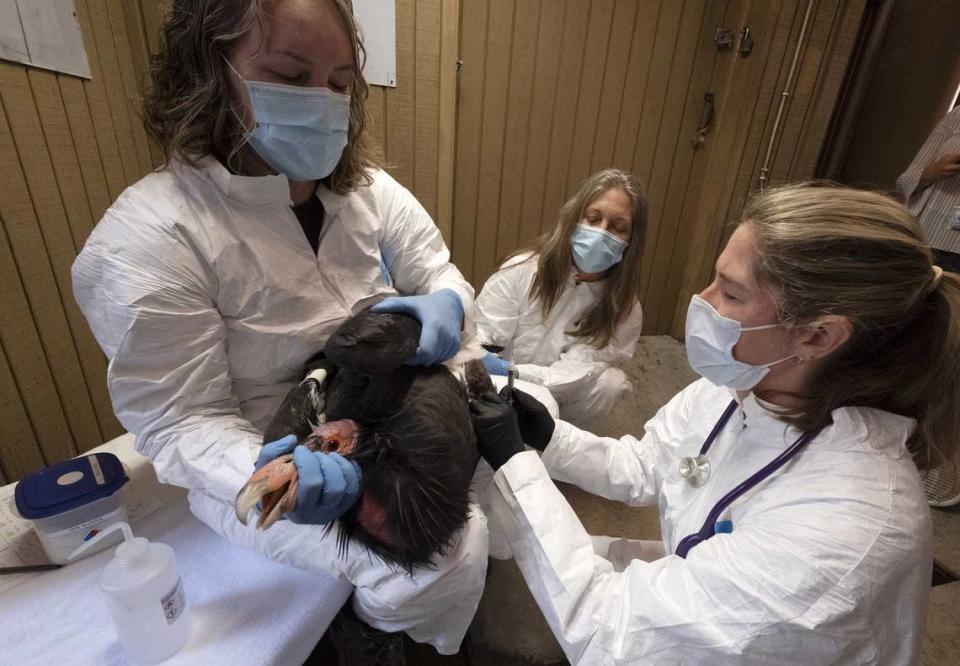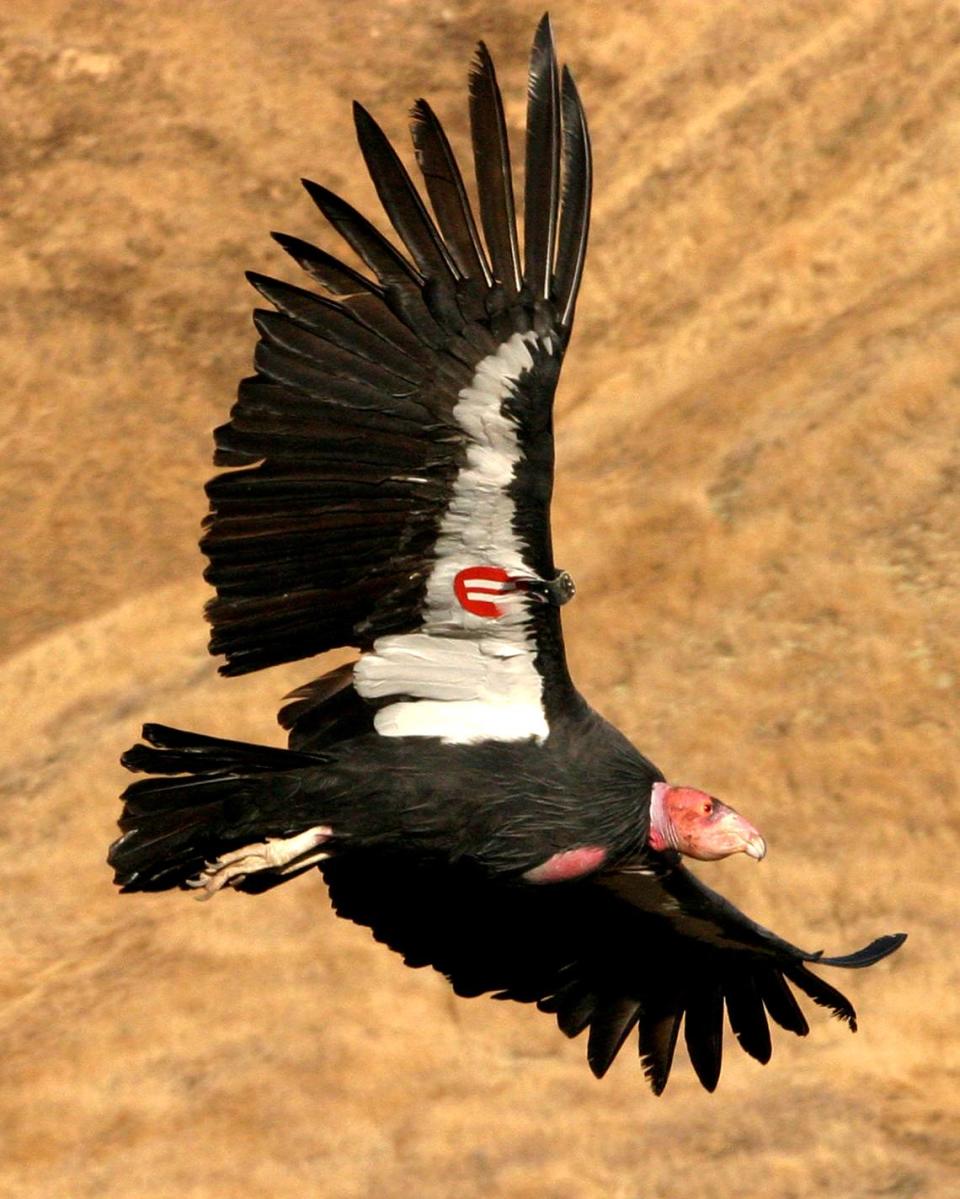10 California condors are being released into SLO County wilderness. Here’s when
Ten juvenile California condors have arrived at the large holding pen in the craggy mountains high above San Simeon.
Three were brought from the Los Angeles Zoo and Botanical Gardens in early October, and seven arrived on Oct. 25 from the Oregon Zoo.
The giant endangered birds were reared in captivity and kept isolated away from people.
They will be released into the wilds of San Luis Obispo County in groups of five in the coming weeks, joining the 92 condors currently flying free as part of the Central California flock.
Video of the releases, tentatively planned for Nov. 28 and Dec. 12, will be shared with classrooms via live-streaming presentations.
Big Sur’s Ventana Wildlife Society has been releasing condors each autumn from the San Simeon site for seven years.
However, this year’s cohort of captive-bred birds will be unique.

Condors vaccinated against avian flu
These 10 young condors have been vaccinated to protect them from highly pathogenic avian influenza, which is still a threat to domestic and wild birds.
A total of 21 condors perished from HPAI earlier this year in Arizona.
The U.S. Fish and Wildlife Service led efforts to hold vaccine trials involving captive-bred condors in the Los Angeles Zoo, San Diego Wildlife Alliance and the Oregon Zoo.
The vaccine used to protect condors from HPAI was developed and manufactured by animal health company Zoetis.
Initially, members of a surrogate species — black vultures — were vaccinated against the deadly avian flu at the Carolina Raptor Center in North Carolina.
Once it was determined that the vaccine was safe, the Los Angeles Zoo vaccinated three juvenile California condors on July 18.
Another 17 juvenile condors were then vaccinated at the Oregon Zoo.
The 10 condors in San Simeon will receive a second dose of the vaccine before they are released into the wild in San Luis Obispo County, VWS Executive Director Kelly Sorenson said.
“The latest results from the vaccine trials are encouraging, and now enables a significant step forward in the protection of these magnificent and critically endangered birds,” Sorenson said.
The results show that “an impressive 60% of the condors receiving the vaccination – formulated explicitly for condors – showed a titer (immunity) response to the vaccine,” Sorenson explained in a news release.
“These ground-breaking trial results fill us with hope and optimism,” Sorenson said, and “brings us one step closer to safeguarding the health and well-being of these remarkable birds.”

Endangered birds wait to be released from San Simeon
The 10 condors — six females and four males — average 1.5 years old.
Condors reach maturity around 5 years old. The birds will not mate or acquire their distinctive red- orange heads until then.
However, their wingspan has already reached 9 and a half feet, the same as adults.
These birds can rise thousands of feet on air currents, glide long distances and travel up to 55 miles per hour as they search for their favorite food: carrion, or, dead animals.
In addition to receiving a second vaccination, the 10 condors will be fitted with wing-mounted radio and GPS transmitters, including identification tags, so their movements can be tracked.
The large pen in San Simeon, used for several years as a release site for juveniles, has been “modified this year to help protect pre- release condors from any possible HPAI exposure,” VWS biologist Joe Burnett explained in an email.
A solid roof, additional netting and steel mesh have been added to the pen “to prevent smaller birds from entering the pen and potentially spreading HPAI,” Burnett added.
The three condors from the Los Angeles Zoo are identified by number as No. 1137, No. 1139 and No. 1170, according to Burnett.
The seven condors from the Oregon Zoo are known by the numbers 1123, 1124, 1127, 1128, 1136, 1141 and 1144.
Prior to their release, the condors can be viewed in their holding pen via VWS and Explore.org’s San Simeon Sanctuary cam. Go to ventanaws.org/condor_cam.html to see livestream video of the birds.
For more information about how to watch livestream video of the condor releases on Nov. 28 and Dec. 12, visit ventanaws.org.

